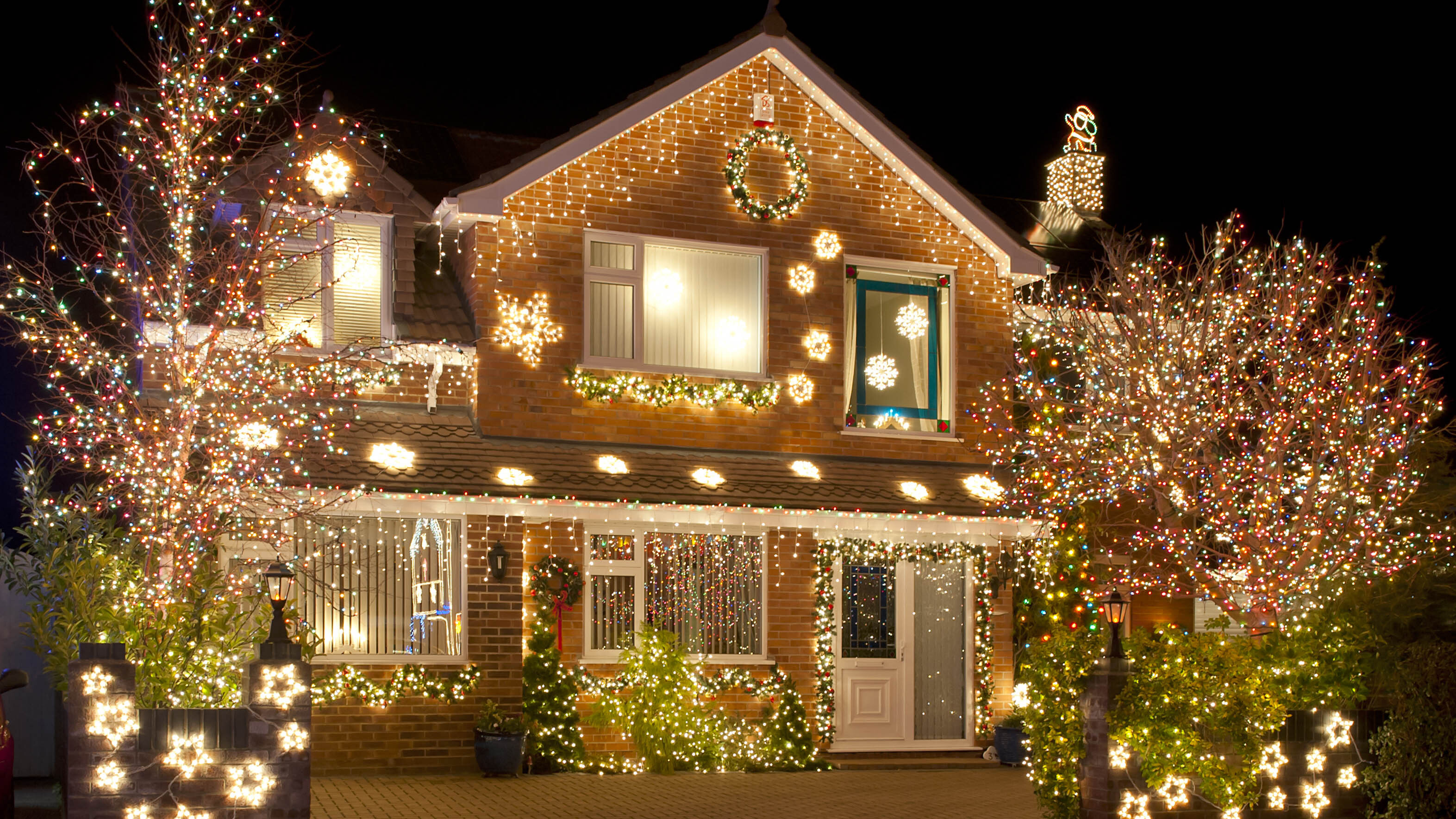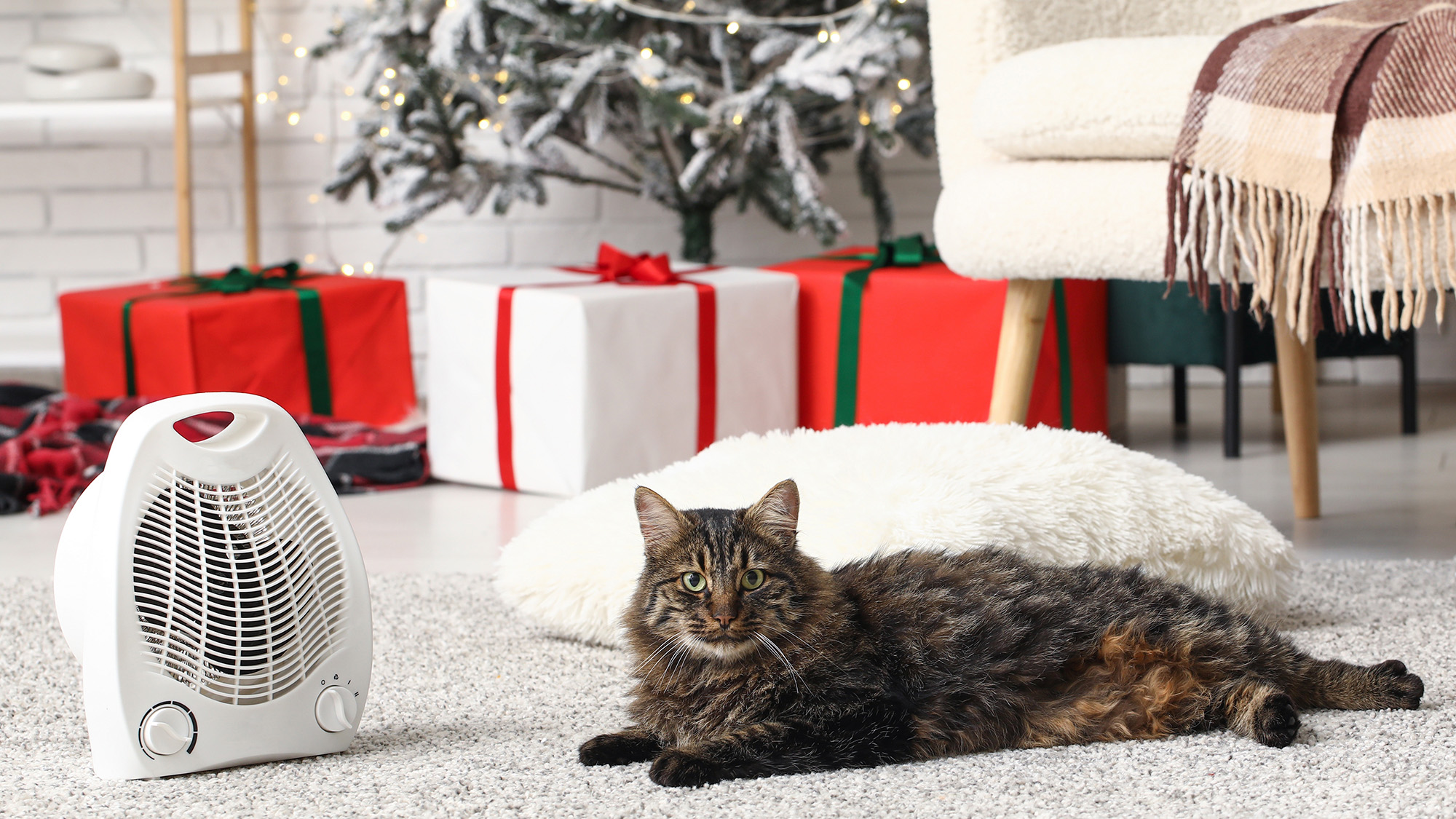5 common house dangers to be aware of during the holidays — and how to prevent them
Safety first with these expert tips

The holiday season is a time of cheer when we decorate our homes and come together with family and friends to enjoy good food and company. There’s always lots to prepare from present buying and wrapping, decorating your home with a tree and lights, and preparing lots (and lots) of food.
However, with so many tasks to complete to ensure the holiday season is enjoyed by all, it can be easy to overlook some safety hazards that, if left forgotten, could cause mishaps or, at the very worst, major safety dangers.
I've spoken directly with safety experts who shared their top five tips on common dangers to avoid during Christmas so you can enjoy the festivities with peace of mind.
1. Be cautious with candles

Candles bring a beautiful ambiance to a home over the festive season, with many releasing fragrant aromas to enhance the mood. However, Joel Efosa, CEO of Fire Cash Buyer, points out that open flames are a major cause of fire damage, and you need to take extreme care when lighting them.
“Candles add a festive touch, but they must be kept far from any flammable materials, with a recommendation of at least 3ft distance between candles and anything that is flammable,” says Efosa.
It’s also important to take another cautionary step. “Ensure the wick is cut to 1/4 inch during each use so the flame doesn’t get too high, and make sure there are at least 4 inches between candles.”
The National Candle Association also warns against leaving candles unattended and never leaving a candle alight at night or while you may fall asleep.
Sign up to get the BEST of Tom's Guide direct to your inbox.
Get instant access to breaking news, the hottest reviews, great deals and helpful tips.
2. Overloading sockets

According to Efosa, one of the top fire hazards is electrical malfunctions, especially during the festive season. “Overloading outlets with multiple light strands, decorations, or power-hungry devices increases the risk of overheating and can lead to short circuits or electrical fires,” he says.
Matthew Currington, technical director at The Lighting Superstore, says, “This is particularly important if you’re using older lights, as they can draw more power and, combined with outdated home wiring, are at higher risk of overheating.”
Efosa suggests distributing your decorations across multiple outlets throughout the space to avoid the hazard and minimize the risk, rather than piling up one socket with plugs. And if you like to fill your home with lights during the festive season and know that you’ll have lots of plugs to connect, he suggests investing in surge protectors.
Meanwhile, Chris Madikian, electrical expert at The Local Electrician recommends opting for LED lights over traditional incandescent bulbs, as they are “cooler, energy-efficient, and safer to use”.
Why you need a power surge
A surge protector is slightly different from a power strip, a long strip containing multiple power outlets connected to a cable with a plug that fits into your wall socket.
Power strips can only withstand a certain amount of watts, and they can quickly become overloaded. This causes the strip to overheat, electrical failure, and the possibility of an electrical fire.
The best surge protectors look like power strips but contain electronic that protect your electronic devices from electrical surges, preventing damage and fires.
This surge protector will protect any electronic device from surges and spikes. This 12 outlet model is suitable for home office use and to keep all your gadgets running, including festive lights. It has an 8-foot cord and a conveninet right-angle plug.
3. Use heaters safely

We spend more time at home during the holiday season, but the days and evenings can be chilly. At this time of year, we’re likely to pull out a space heater that’s been stored in an attic or plug in an electric blanket to keep cozy.
When using additional heating, Efosa advises, “Always read the instructions before use and keep heaters at least three feet away from flammable objects like curtains, furniture, and Christmas trees.”
Tractor Supply also warns against plugging a portable heater into a power strip or indirect power source, as it may cause it to overheat, damaging the appliance and creating a potential fire risk.
Efosa also adds, “Never leave heating equipment unattended, and make sure to turn off space heaters and unplug heated blankets before bed or leaving the room.”
4. Hang your festive lights with care

Don’t get into a tangle with your festive lights this season because you could create a safety hazard if you don’t check them or hang them correctly.
Currington advises, “Christmas lights that have been stored and reused for years often emerge with worn cables, damaged insulation, or exposed wires, which increases the risk of shocks and short circuits. It’s crucial to inspect lights for any damage before use and to responsibly recycle or dispose of damaged sets.”
Using the wrong lights in the wrong place can also cause a fire hazard, with Currington saying, “For exterior lighting, use Christmas lights specifically rated for outdoor use in your yard, as they’re stronger and better insulated to handle cold and wet weather.”
He also warns, “Dry winter leaves can act like tinder next to exposed electrical wiring, so always check labels and follow the manufacturer’s recommendations, looking for terms like ‘waterproof’ or ‘water-resistant’.
Another issue is how you hang your festive lights. “Avoid using nails, staples, or metal hangers to secure fairy light cables, especially outdoors, as these can pierce or pinch through the insulation, risking a fire or an electric shock,” he advises.
As an alternative, he suggests using insulated hooks that are designed for purpose, which are a safer choice all around.
Top tip: LED lights are the safest lighting option, as they emit less heat, reducing fire risks for nearby decorations.
5. Be kitchen safe

There are plenty of kitchen hazards to be aware of over the holiday season, from using blunt knives to leaving food unattended on cooktops to placing decorations in harm’s way. There is also the added risk of poisoning your guests if your food isn’t stored safely or the turkey isn’t cooked to the correct temperature. However, kitchen gadgets can help you avoid a Christmas dinner disaster, such as fridge and meat thermometers.
Aside from food issues, there are fire hazards to be aware of that should be avoided. While decorating your kitchen with garlands draped above your gas or electric range hood might feel festive, they pose a serious fire hazard.
Julie Gokce, senior designer at More Kitchens, says, “Kitchens are often the heart of the home during the holiday season, used frequently for hosting and cooking, and having flammable decorations near your hob significantly increases the risk of fire.”
For this reason, it’s vital to keep flammable decorations away from heat sources, whether in the kitchen or any other room in your home.
Gokce adds, “Always move any foliage and other décor well away from the hob while cooking to ensure safety and prevent any long-term damage to your kitchen.”
More from Tom's Guide

Camilla Sharman has worked in publishing and marketing for over 30 years and has covered a wide range of sectors within the business and consumer industries both as a feature, content, and freelance writer.
As a business journalist, Camilla has researched articles for many different sectors from the jewellery industry to finance and tech, charities, and the arts. Whatever she’s covered, she enjoys delving deep and learning the ins and out of different topics, then conveying her research within engaging content that informs the reader. In her spare time, when she’s not in her kitchen experimenting with a new recipe, you’ll find her keeping fit at the gym. In the pool, stretching at a yoga class, or on a spin bike, exercise is her escape time. She also loves the great outdoors and if she’s not pottering about in her garden, she’ll be jumping on her bike for a gentle cycle ride.

